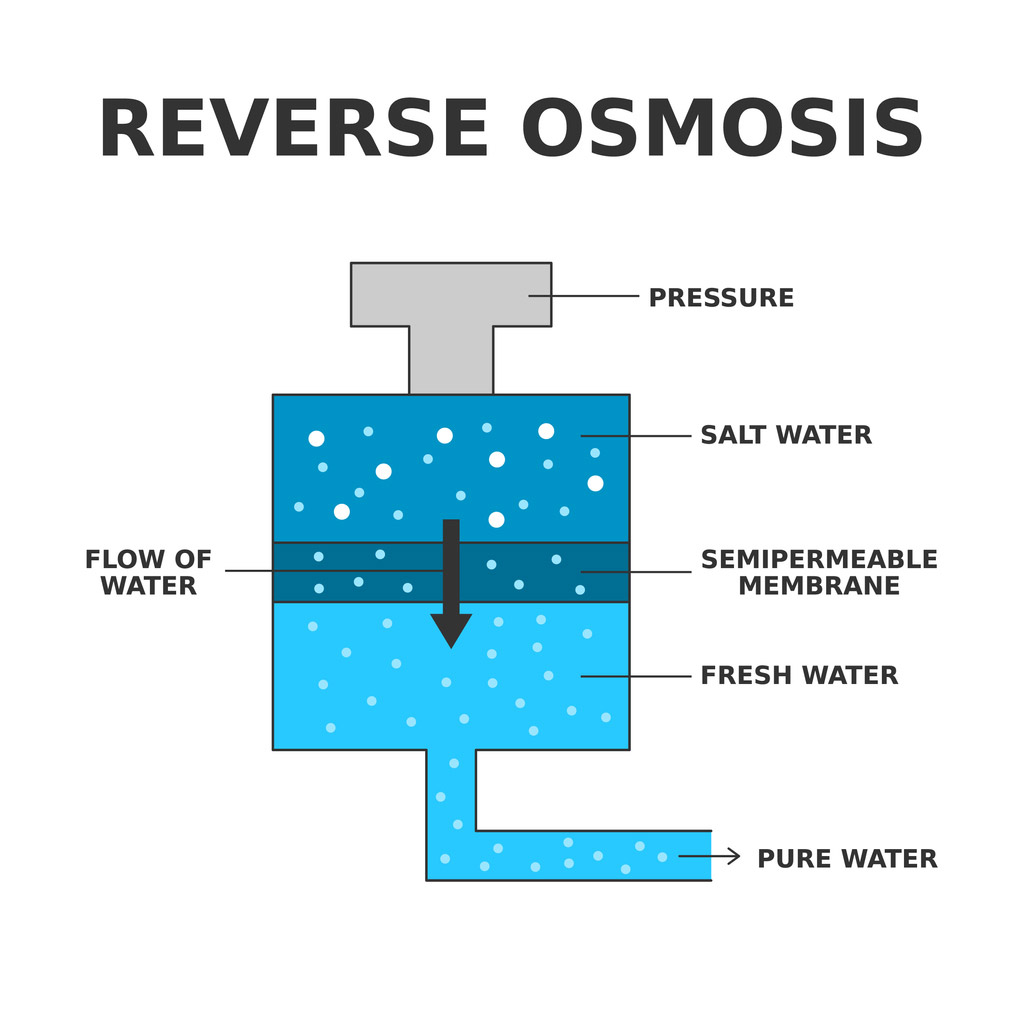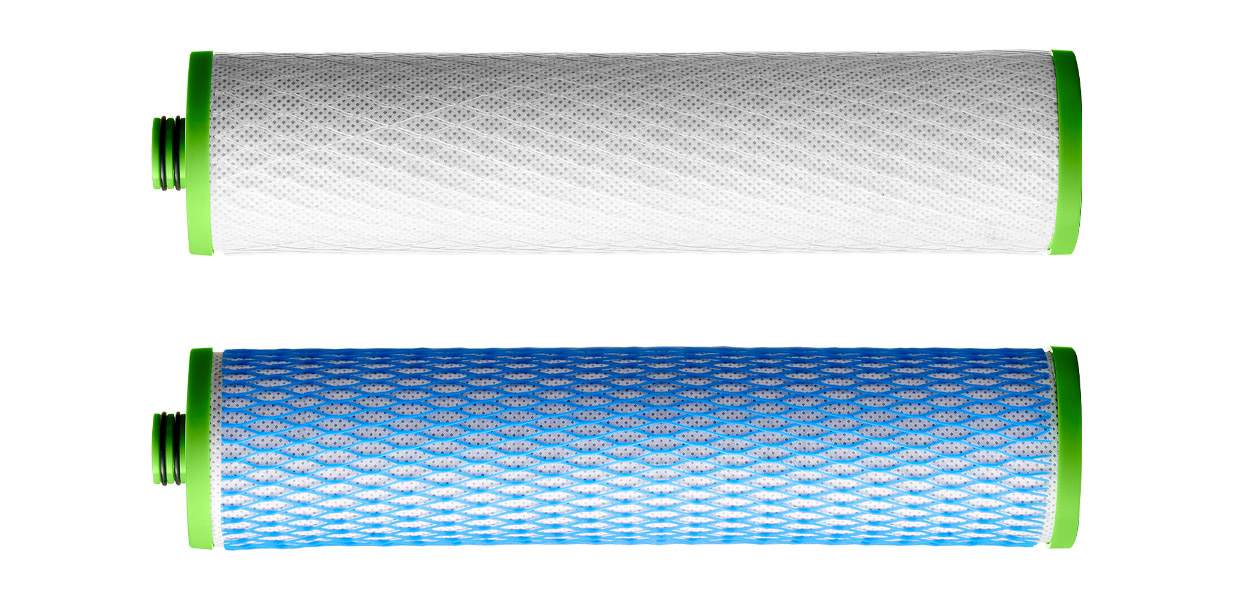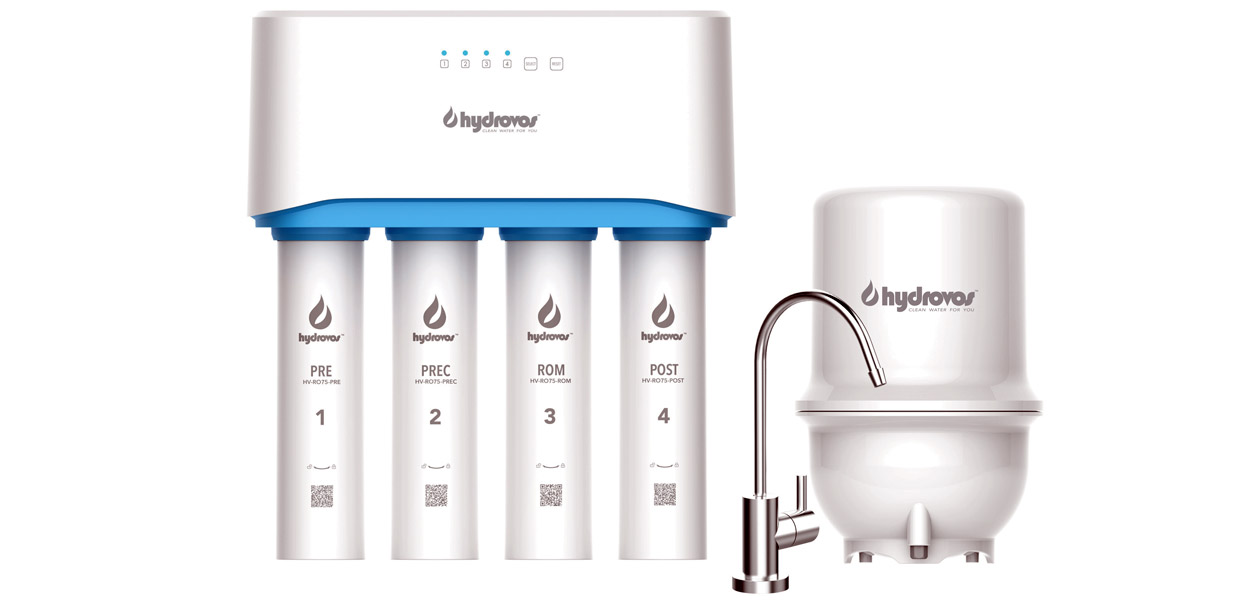Discover the Essentials of Purified Water: Embark on an educational journey to understand the fascinating science of clean drinking water. Our in-depth exploration begins with the fundamentals of osmosis, a natural process where water molecules travel through a semipermeable membrane from a lower solute concentration region to a higher concentration, balancing the solute levels on both sides. This process is vital to many living organisms, including the hydration of our own cells.
However, when we harness the power of Reverse Osmosis, we cleverly flip the natural osmosis on its head. This remarkable technology forces water molecules from a higher concentration of contaminants to a lower concentration, effectively filtering and purifying the water. By understanding the science behind moving molecules from a tainted, denser solution to a pristine, dilute one, reverse osmosis filters can deliver clean, safe, and delicious drinking water straight from your tap. Join us as we delve into reverse osmosis and reveal how this process can transform your water-drinking experience.
The Process of Reverse Osmosis Filtration
Reverse osmosis filtration operates in stages to ensure the production of pure water. Each stage is critical in eliminating different types and sizes of contaminants from your drinking water.

Pre-filtration (Optional)
Some systems include a pre-filtration step to remove sediments and chlorine that can damage the RO membrane. This process ensures the longevity and effectiveness of the filtration system.
Pressure Application
Central to the RO process is the application of pressure. Water is forced against the semipermeable membrane, a necessary step that propels the filtration process and facilitates the removal of contaminants.
Semi-permeable Membrane Functionality
The heart of the RO system is its semi-permeable membrane. This selective barrier allows only water molecules to pass through while rejecting larger particles, such as salts, bacteria, and chemicals.
Separation of Clean Water and Contaminants
As water passes through the membrane under pressure, it separates into two streams. Clean, purified water is diverted for use, whereas the contaminated water and rejected impurities are flushed away from the system.
Post-filtration (Optional)
Following the RO membrane, a post-filtration stage often exists to polish the water. This might include carbon filters or other treatments to improve taste further or remove any remaining traces of contaminants.
Through this multistage process, reverse osmosis water filters provide a reliable solution for purifying water, ensuring access to clean and safe drinking water in your home.
Key Components of a Reverse Osmosis Water Filter
The reverse osmosis (RO) water filtration system is composed of several crucial components that work in tandem to provide you with clean, safe, and great-tasting water. Each part plays a specific role in eliminating contaminants and ensuring the efficiency of the filtration process. Below, we explore the main components that are integral to the RO system’s functionality.
The Semi-permeable Membrane: The Heart of RO
The semi-permeable membrane is the centrepiece of any reverse osmosis system. It allows only water molecules to pass through while capturing up to 99% of dissolved salts, organics, bacteria, and pyrogens. The quality and pore size of the membrane determine its effectiveness in filtering specific contaminants.
Pre-Filters: Including Carbon Filters
Before water reaches the semipermeable membrane, it must go through pre-filters. These typically include sediment filters to remove dirt, rust, and other solid particles, as well as carbon filters that are effective at reducing chlorine, which can damage the membrane, and other volatile organic compounds (VOCs) that affect taste and odour.

Post-Filters: Enhancing Water Quality
After the filtration process is done, the water passes through post-filters. Post-filters can include a second carbon filter that polishes the water to remove any remaining tastes and odours, providing you with a crystal-clear drink that is safe and has great taste.
These components are key to the reverse osmosis system, ensuring that your water is of the highest quality every time you turn on your tap. With regular maintenance and part replacements, your RO system will continue providing you with fresh and pure water for years.
Removal of Contaminants by Reverse Osmosis Systems
Reverse Osmosis (RO) systems offer a highly effective solution for eliminating a wide array of impurities from water, ensuring safe and clean water for consumption. The semi-permeable membrane at the core of RO systems is designed to block contaminants while allowing pure water to pass through.
Types of Contaminants Removed
- Microbes: Bacteria, viruses, and other microorganisms are removed by the RO membrane, contributing to the safety of drinking water.
- Minerals: Dissolved salts and minerals like calcium, magnesium, and sodium are significantly reduced, which can help lower water hardness.
- Chemicals: Harmful chemicals such as chloride, fluoride, and substances from agricultural runoff like pesticides are filtered out.
Efficiency of RO in Filtering Out Various Substances
The efficiency of an RO system to remove specific substances depends on factors such as water pressure, temperature, and membrane quality. Generally, RO systems can remove up to 99% of dissolved salts, particles, colloids, organics, bacteria, and pyrogens. However, the removal rates may vary for different substances.
Impact on Molecule Size and Contaminant Size
One of the key factors in the effectiveness of RO systems is the size of the molecules or particles being filtered. The RO membrane has tiny pores, typically measuring around 0.0001 microns in size, which are small enough to prevent most contaminants from passing through. This is because most unwanted particles and molecules are larger than the water molecules and are thus rejected by the membrane.
The Health Benefits of Drinking RO Water
Reverse osmosis water, commonly referred to as RO water, is not just about providing clean drinking water; it’s also associated with several health benefits that may not be immediately apparent.
The primary function of reverse osmosis systems is to remove potentially harmful contaminants from water. This means drinking RO water can significantly reduce the risk of consuming substances like lead, arsenic, nitrates, and certain types of bacteria and viruses. Using an RO system ensures that these impurities are filtered out, potentially lowering the risk of health issues associated with these contaminants.
Comparison of RO Water with Tap and Bottled Drinking Water
RO water vs. Tap Water: While Council or municipal tap water is generally safe to drink, it may still contain trace contaminants that can slip through treatment facilities. RO systems provide an extra layer of purification, ensuring your drinking water is free from these residual substances.
RO water vs. Bottled Water: Bottled water is often perceived as a cleaner alternative to tap water. However, it can be expensive and is not always subject to the stringent standards applied to tap water. Moreover, the environmental toll of single-use plastic bottles is a growing concern. RO water offers a convenient and ecologically responsible solution that can deliver a similar or even superior level of purity to bottled water, without the added costs and environmental impact.
- Improved Taste: RO filtering can improve the taste and odour of water by removing contaminants that cause unpleasant flavours and smells.
- Possible Mineral Retention: Some RO systems are equipped with remineralisation filters, adding healthy minerals back into the purified water, which are beneficial for health.
- Encourages Hydration: With its clean and fresh taste, RO water can motivate individuals to drink more water, aiding in proper hydration, which is vital to overall health.
RO Filtration vs. Other Filtration Methods
When considering water filtration options, it’s important to understand how reverse osmosis systems stack up against other available technologies.
Carbon filters are widely used to remove chlorine, volatile organic compounds (VOCs), and odours from water. However, they are less effective at removing dissolved inorganic substances like salts or metals. Other technologies, such as ultraviolet (UV) lights, are excellent for disinfection but do little to remove heavy metals or chemical contaminants.
- RO systems use a semi-permeable membrane that filters out many contaminants, including those too small for carbon filters to catch.
- UV filtration is limited in scope, focusing primarily on biological contaminants, making it an excellent supplementary method to RO.
- Mechanical filters remove sediment and larger particles but cannot filter out chemical contaminants or dissolved solids.
RO systems shine when water has a high mineral content or contains various chemical pollutants. The multi-stage filtration process reduces the presence of physical particles and significantly diminishes the concentration of dissolved solids and potentially harmful chemicals.
- RO systems effectively reduce water hardness and prevent scale buildup in areas with hard water.
- RO filtration has a proven track record of efficient removal for individuals concerned about ingesting heavy metals such as lead.
- RO’s meticulous filtration barrier makes it an ideal choice for producing pure water, free from a wide spectrum of contaminants.
In summary, while various water filtration methods serve specific purposes, reverse osmosis systems offer a comprehensive solution to a broad range of water quality issues, making them a superior choice in environments demanding high purity levels.
Frequently Asked Questions
Do I Need a Refrigerator Water Filter if I Have Reverse Osmosis?
If you have a properly functioning reverse osmosis water filter system installed in your home, you likely don’t need a separate refrigerator water filter. Here’s why:
Reverse osmosis filters are highly effective at removing a wide range of contaminants from your water, including chlorine, lead, fluoride, and various other minerals and impurities. These systems typically use a multi-stage filtration process that includes a semi-permeable membrane that allows clean water to pass through while filtering out contaminants.
Refrigerator water filters, on the other hand, are generally less sophisticated. They mainly focus on removing chlorine taste and odour, and some might offer additional filtration for specific contaminants like lead. A separate refrigerator filter becomes redundant since your RO system already addresses these concerns.
Do I Need to Add Minerals to Reverse Osmosis Water?
Reverse osmosis removes both harmful and beneficial minerals from water. While some believe adding minerals back can improve taste and offer additional health benefits, a balanced diet often provides the most needed minerals. The decision to remineralise RO water is ultimately personal. Consult a healthcare professional if you have specific health concerns or rely heavily on water for mineral intake. Regardless, RO water remains a safe and effective hydration source.
Do I need to add minerals to reverse osmosis water?
Yes, reverse osmosis (RO) systems are highly effective at removing bacteria and viruses from water. This technology utilises a semi-permeable membrane that allows water molecules to pass through while filtering out larger particles, including harmful microorganisms.
The size of the pores in the RO membrane is significantly smaller than bacteria and viruses, effectively trapping them and preventing them from contaminating the filtered water. This makes RO a reliable method for purifying water and ensuring its safety for consumption. It’s important to note that for optimal performance, proper maintenance of the RO system, including regular filter replacements, is crucial.



